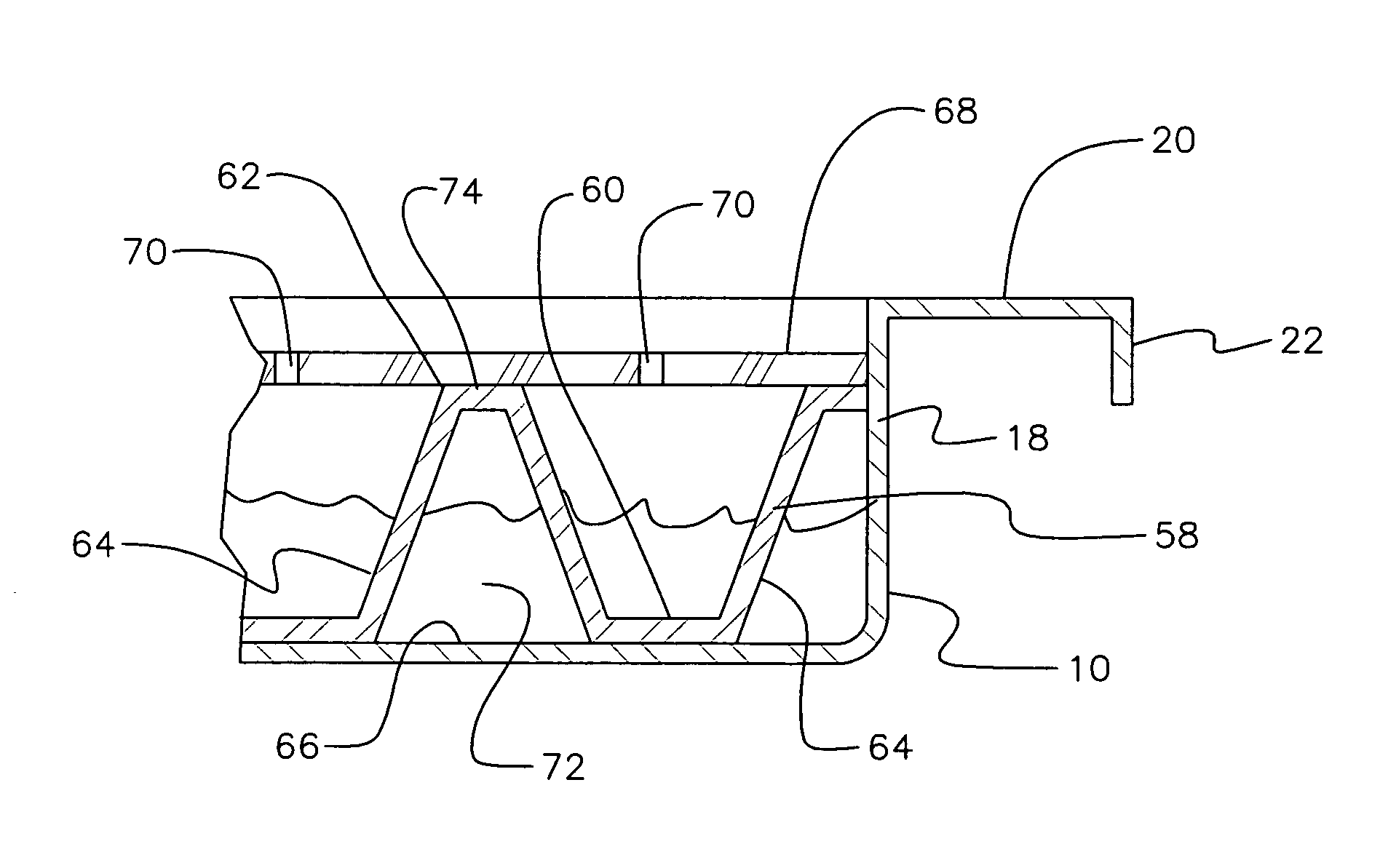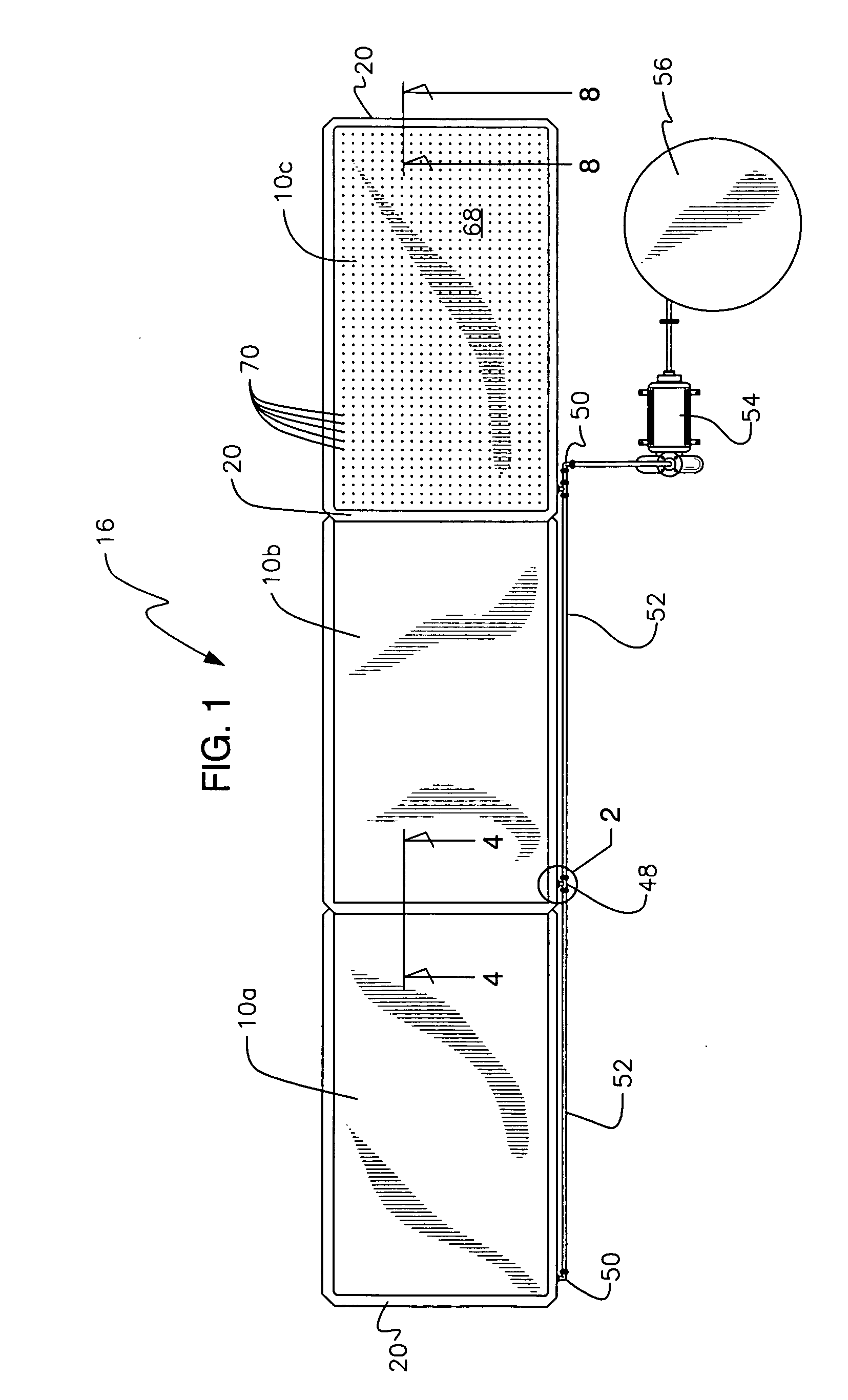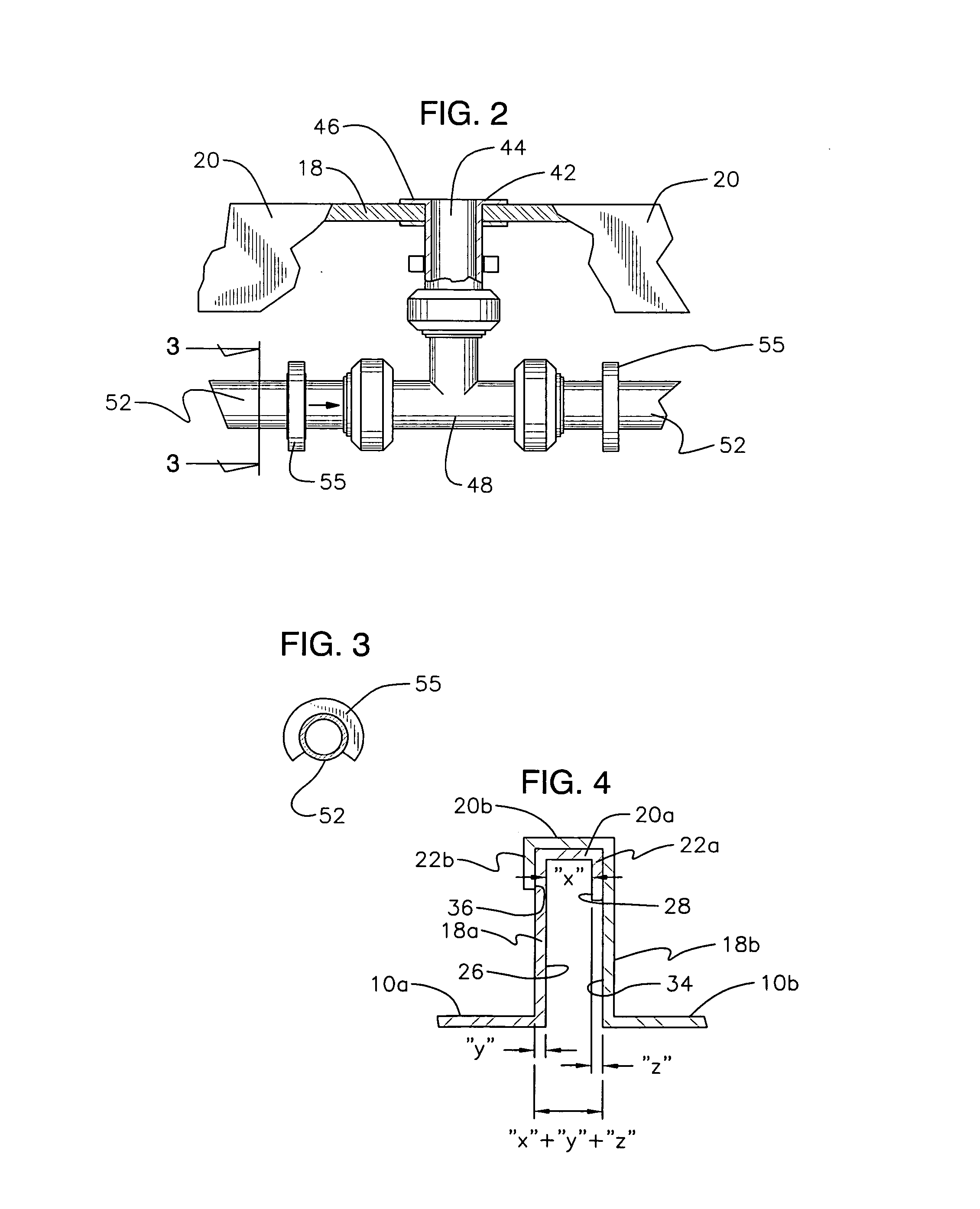Modular and mobile waste and/or hazardous liquid containment and collection shower system
- Summary
- Abstract
- Description
- Claims
- Application Information
AI Technical Summary
Benefits of technology
Problems solved by technology
Method used
Image
Examples
Embodiment Construction
, contained herein below, may be better understood when accompanied by a brief description of the drawings, wherein:
[0017]FIG. 1 is a top plan view of a hazardous and / or waste water collection and containment shower system of the present invention, illustrating the use of multiple modular pans or water impervious barriers;
[0018]FIG. 2 is a top plan view, partially in section, of a valve connection employed in any one of the modular pans employed in the present invention;
[0019]FIG. 3 is a cross section view of FIG. 2 along lines 3-3 of FIG. 2;
[0020]FIG. 4 is a cross-sectional view, along lines 4-4 of FIG. 1, illustrating how two modular pans interconnect by way of friction fit along top edges of upstanding walls thereof;
[0021]FIG. 5 is a perspective view of a corner section of a modular pan employed in the present invention;
[0022]FIG. 6 is a side plan view, partially in section, of side edges of two modular pans illustrating the manner in which any two modular pans interconnect;...
PUM
 Login to View More
Login to View More Abstract
Description
Claims
Application Information
 Login to View More
Login to View More - R&D
- Intellectual Property
- Life Sciences
- Materials
- Tech Scout
- Unparalleled Data Quality
- Higher Quality Content
- 60% Fewer Hallucinations
Browse by: Latest US Patents, China's latest patents, Technical Efficacy Thesaurus, Application Domain, Technology Topic, Popular Technical Reports.
© 2025 PatSnap. All rights reserved.Legal|Privacy policy|Modern Slavery Act Transparency Statement|Sitemap|About US| Contact US: help@patsnap.com



